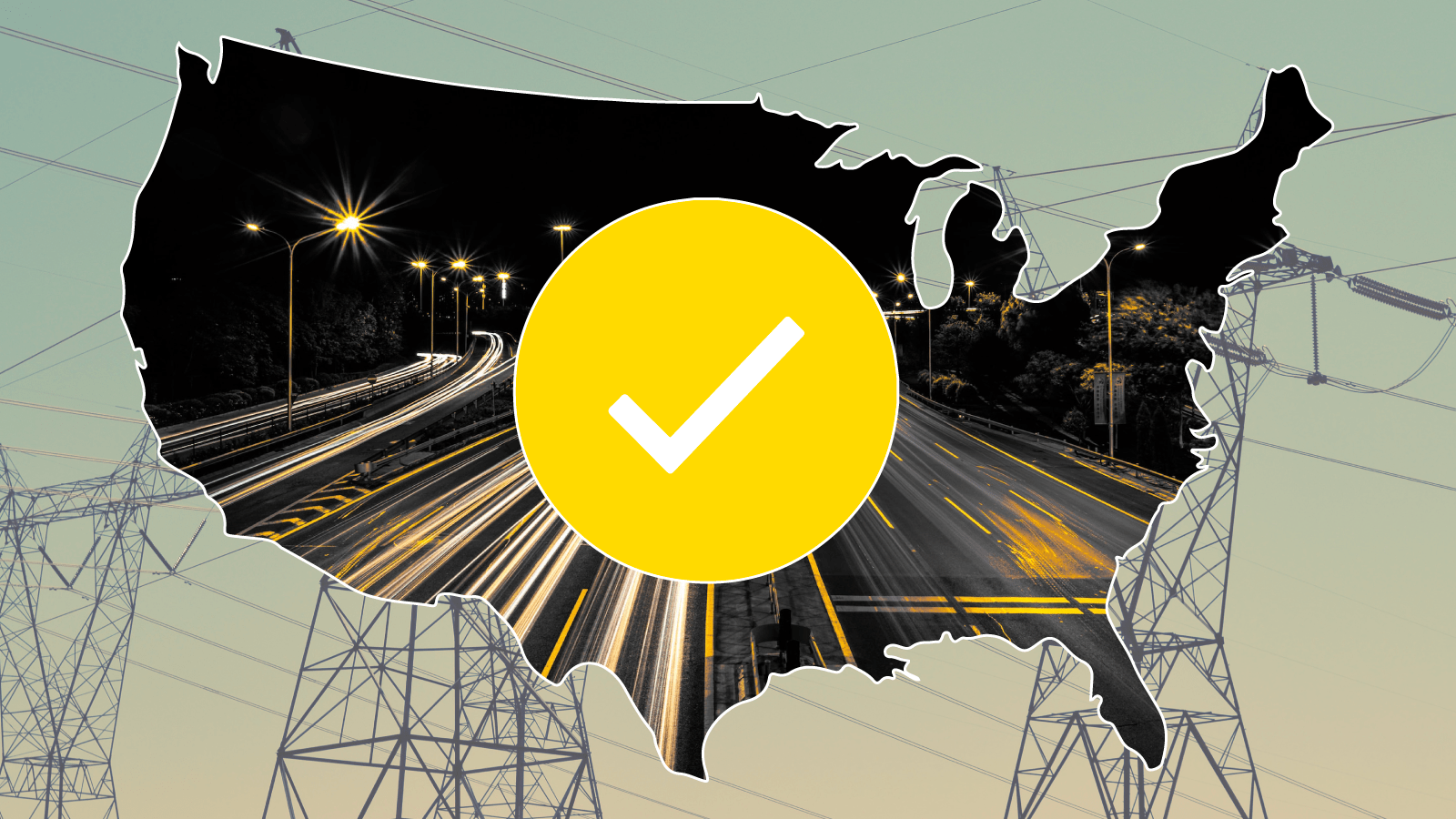Cars and trucks are among the largest sources of climate-warming pollution in the U.S., accounting for around 23% of national emissions in 2021. Electric vehicles, along with strategies to reduce driving, are central to reducing that pollution.
But do EVs really lower carbon emissions, even when the electricity feeding the car comes from heavily polluting sources? (Looking at you, West Virginia.) The answer – thankfully – is a resounding yes. Compared to gasoline-powered vehicles, electric cars emit substantially less carbon dioxide pollution, no matter which form of energy is used to recharge them.
The map below is interactive. Hover over a state to see how much carbon dioxide pollution can be reduced by driving with electricity instead of gasoline.
Key takeaways
The cleaner the electricity sources, the bigger the pollution reduction. Vermont, Washington, South Dakota, and Idaho have the cleanest in-state electricity generation, so in these states, driving an EV will shrink carbon pollution by around 90% compared with gasoline.
West Virginia and Kentucky generate most of their electricity from coal, so the savings are smaller, but an EV charged on West Virginia’s coal-dominated grid will still reduce carbon pollution by around 30%.
In the U.S. as a whole, driving an EV lowers CO2 pollution by two-thirds. Over time, electricity is getting less carbon-intensive, so the pollution reductions will only get larger in the coming years.
Read: Don’t get fooled: Electric vehicles really are better for the climate
A few caveats
The map is based on electricity generated within each state. It doesn’t measure electricity that is imported or exported between states.
This map doesn’t consider rooftop solar, which can lower an EV’s carbon emissions to zero. Similarly, Electrify America announced they’re generating substantial solar energy to help power their charging network.
This analysis doesn’t include upstream energy consumption, such as refining gasoline, building power plants, or the transportation of either oil or electricity. It also doesn’t factor in the manufacturing of either type of car. In-depth life cycle assessments by Argonne National Laboratory, Carbon Brief, Hannah Ritchie, and Auke Hoekstra, among others, have shown that across their entire life cycles, EVs contribute lower carbon pollution than gasoline or diesel-powered vehicles.
Details and data sources
This comparison uses the Tesla Model Y and the Toyota RAV 4, which are the two bestselling vehicles in the U.S. that aren’t pickup trucks. These small SUVs are similar in size, popularity, and intended use. Emissions for the Tesla Model Y and Toyota RAV 4 can be found at FuelEconomy.gov. The gasoline-powered, all-wheel-drive version of the RAV 4 was used as the basis of comparison.
Energy analysts at Ember compiled electricity data from 2022, and they did the handy math on the carbon intensity (in grams of CO2 per kilowatt-hour of electricity) for each state’s electricity mix. One can also calculate carbon intensity using data from the Energy Information Administration.
For a closer look at the types of energy used to generate electricity in each state in 2021, see our map, Which state is winning at renewable energy production?


